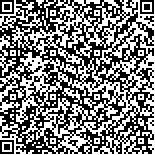| 引用本文: |
杨旭龙,丁雅容,黄新灵,邹梅林,兰宏伟,赵朝宇,周忠志.解毒生肌膏治疗深度烧伤植皮术后残余创面的临床研究[J].湖南中医药大学学报,2023,43(7):1278-1282[点击复制] |
|
| |
|
|
| 本文已被:浏览 1989次 下载 785次 |
| 解毒生肌膏治疗深度烧伤植皮术后残余创面的临床研究 |
| 杨旭龙,丁雅容,黄新灵,邹梅林,兰宏伟,赵朝宇,周忠志 |
| (湖南中医药大学第一附属医院烧伤疮疡整形科, 湖南 长沙 410007;湖南中医药大学医学院, 湖南 长沙 410208) |
| 摘要: |
| 目的 探讨解毒生肌膏修复深度烧伤植皮术后残余创面的临床价值。方法 将2020年5月至2022年6月在湖南中医药大学第一附属医院就诊的深度烧伤植皮术后皮片生长欠佳存在残余创面的40例患者,随机分为试验组(20例)和对照组(20例)。对40例患者深度烧伤植皮术后残余创面,经清创去除局部明显失活皮片,保留间生皮片,再分别对试验组和对照组用解毒生肌膏和磺胺嘧啶银进行换药处理,并在治疗7、14 d观察创面渗液、肉芽组织、再上皮化、细菌阳性率以及白细胞介素(interlenkin-6,IL-6)的含量改变情况。结果 与治疗7 d相比,治疗14 d两组创面渗液情况显著降低(P<0.05),肉芽组织及再上皮化程度显著增高(P<0.05);对照组治疗14 d时IL-6含量显著降低(P<0.05)。试验组治疗7 d和治疗14 d的渗液情况均显著低于对照组(P<0.05),肉芽组织生成以及再上皮化程度均显著优于对照组(P<0.05);试验组治疗7 d的细菌阳性率以及IL-6含量均显著低于对照组(P<0.05)。结论 采用解毒生肌膏治疗深度烧伤植皮术后残余创面,可早期显著减轻感染,抑制炎症反应,减少创面渗液,从而加速肉芽组织生成和再上皮化的发生,是一种修复残余创面较为理想的治疗方法,值得在临床推广使用。 |
| 关键词: 解毒生肌膏 残余创面 临床试验 烧伤 IL-6 再上皮化 炎症 |
| DOI:10.3969/j.issn.1674-070X.2023.07.020 |
| 投稿时间:2022-12-23 |
| 基金项目:湖南省卫生健康委科研项目(D202304039371,D202304039377);中西医结合一流学科开放基金项目(2020ZXYJH47)。 |
|
| Clinical study of Jiedu Shengji Ointment in treating residual wounds after skin grafting for deep burns |
| YANG Xulong,DING Yarong,HUANG Xinling,ZOU Meilin,LAN Hongwei,ZHAO Chaoyu,ZHOU Zhongzhi |
| (Department of Burns, Sores and Plastic Surgery, the First Hospital of Hunan University of Chinese Medicine, Changsha, Hunan 410007, China;Medical School, Hunan University of Chinese Medicine, Changsha, Hunan 410208, China) |
| Abstract: |
| Objective To explore the clinical value of Jiedu Shengji Ointment (JDSJO) in repairing residual wounds after skin grafting for deep burns. Methods A total of 40 patients with residual wounds due to poor growth of skin grafts after skin grafting for deep burns in the First Hospital of Hunan University of Chinese Medicine from May 2020 to June 2022 were randomly divided into experimental group (n=20) and control group (n=20). The residual wounds of these patients were treated with debridement to remove local obviously inactivated skin grafts, and the mesodermal skin grafts were retained. Experimental group and control group were respectively treated with JDSJO and silver sulfadiazine. The wound exudation, granulation tissue formation, re-epithelialization, positive rate of bacteria, and changes in interlenkin-6(IL-6) content of the patients were observed on the 7th and 14th days of treatment. Results Compared with the 7th day of treatment, the wound exudation of the patients in both groups was significantly reduced on the 14th day of treatment (P<0.05), and the granulation tissue formation and the degree of re-epithelialization significantly increased (P<0.05). The IL-6 content of the patients in control group significantly decreased on the 14th day of treatment (P<0.05). After 7 and 14 days of treatment, the wound exudation of the patients in experimental group was significantly less than that of the patients in control group (P<0.05), the granulation tissue formation and the degree of re-epithelialization were significantly better than those in control group (P<0.05). The positive rate of bacteria and the IL-6 content of the patients in experimental group after 7 days of treatment were significantly lower than those of the patients in control group (P<0.05). Conclusion Applied to treating residual wounds after skin grafting for deep burns, JDSJO can significantly reduce infection in the early stage, inhibit inflammation, decrease wound exudation, and thus accelerate granulation tissue formation and re-epithelialization. It is a relatively ideal treatment method for repairing residual wounds and is worthy promoting in clinical application. |
| Key words: Jiedu Shengji Ointment residual wound clinical trial burn IL-6 re-epithelialization inflammation |
|

二维码(扫一下试试看!) |
|
|
|
|




